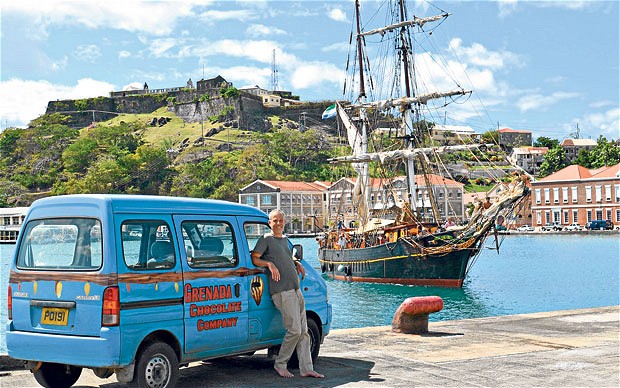It could be a scene from Pirates of the Caribbean.
On the harbour at St George’s, the capital of the island of Grenada, candy-coloured Georgian houses and warehouses line the Carenage, the city’s promenade.
Behind, the 18th-century Fort George overlooks a teal-blue sea. A square-rigged brigantine, the Tres Hombres, is coming in to port.
All that’s missing is Johnny Depp in a bandana. But this is no faux-historic romp. That ship coming in to view, complete with buxom blonde figurehead and bare-chested, bearded crew, is a very modern phenomenon.
Powered entirely by wind and the sun, it is part of the “fairtransport” movement. The aim is to take the sting out of food miles, making the long-distance trade that is economically vital for much of the developing world environmentally sustainable, too.
The intended cargo, meanwhile, is every bit as remarkable: 50,000 bars of chocolate, waiting to be loaded on board for the trip to Portsmouth. Not just chocolate, but Grenada Chocolate Company chocolate: made in Grenada, from beans grown in Grenada, produced by a Grenadian cooperative.
So what, you might say. But the usual path for chocolate is quite different. Cocoa beans are grown in the developing world, some in Latin America, but the majority in Africa.
The largest producer is the Ivory Coast, where child labour is common. Last month Oxfam released a report “Behind the Brands” which berated the large chocolate producers for buying beans produced by exploited women farmers.
After fermentation – a crucial part of the flavour development – and drying, the beans are then shipped to the developed world.
It is here that they are processed into chocolate. Unsurprisingly, this final stage is where the major profits are made, little of which filters back to the poorly paid cocoa growers.
By Xanthe Clay





